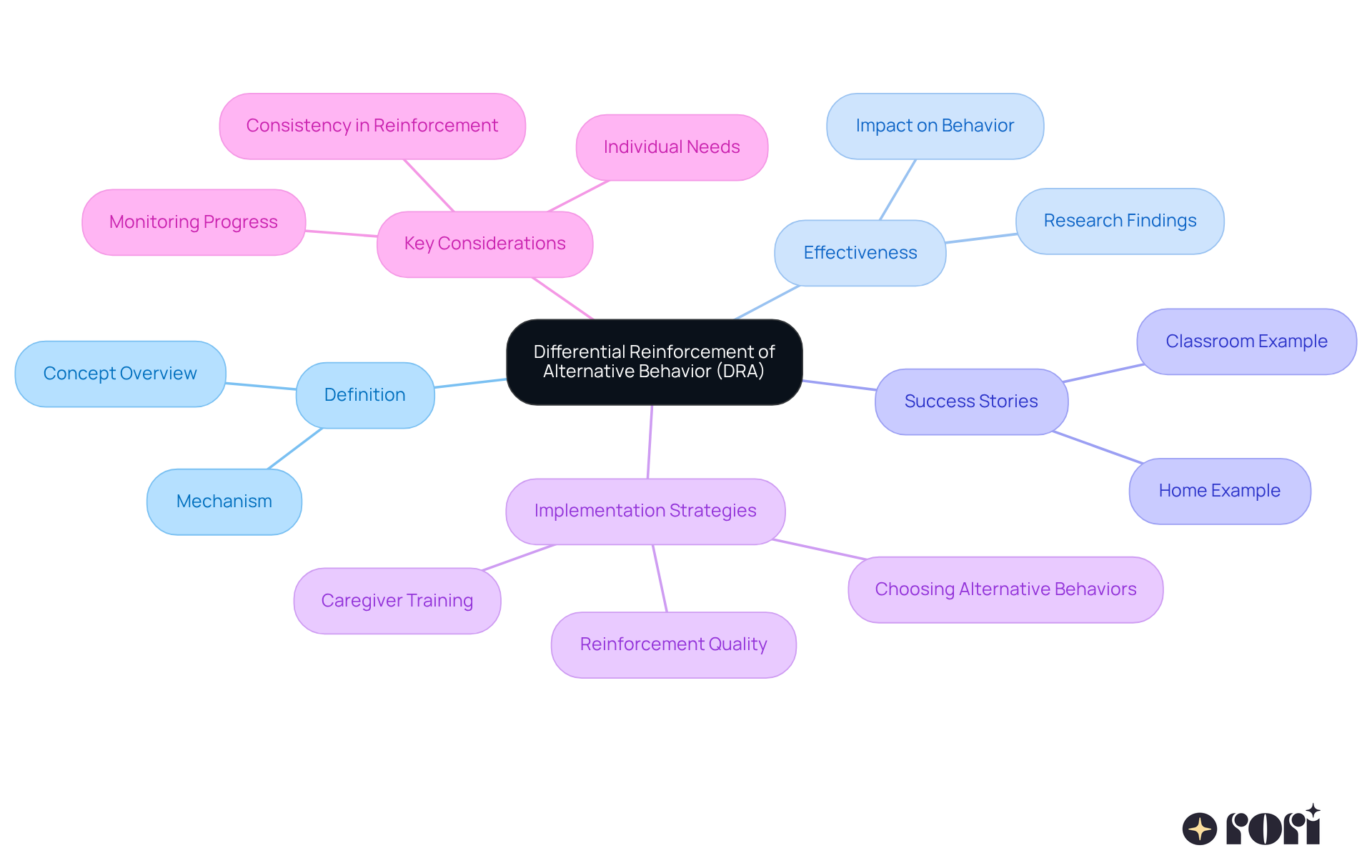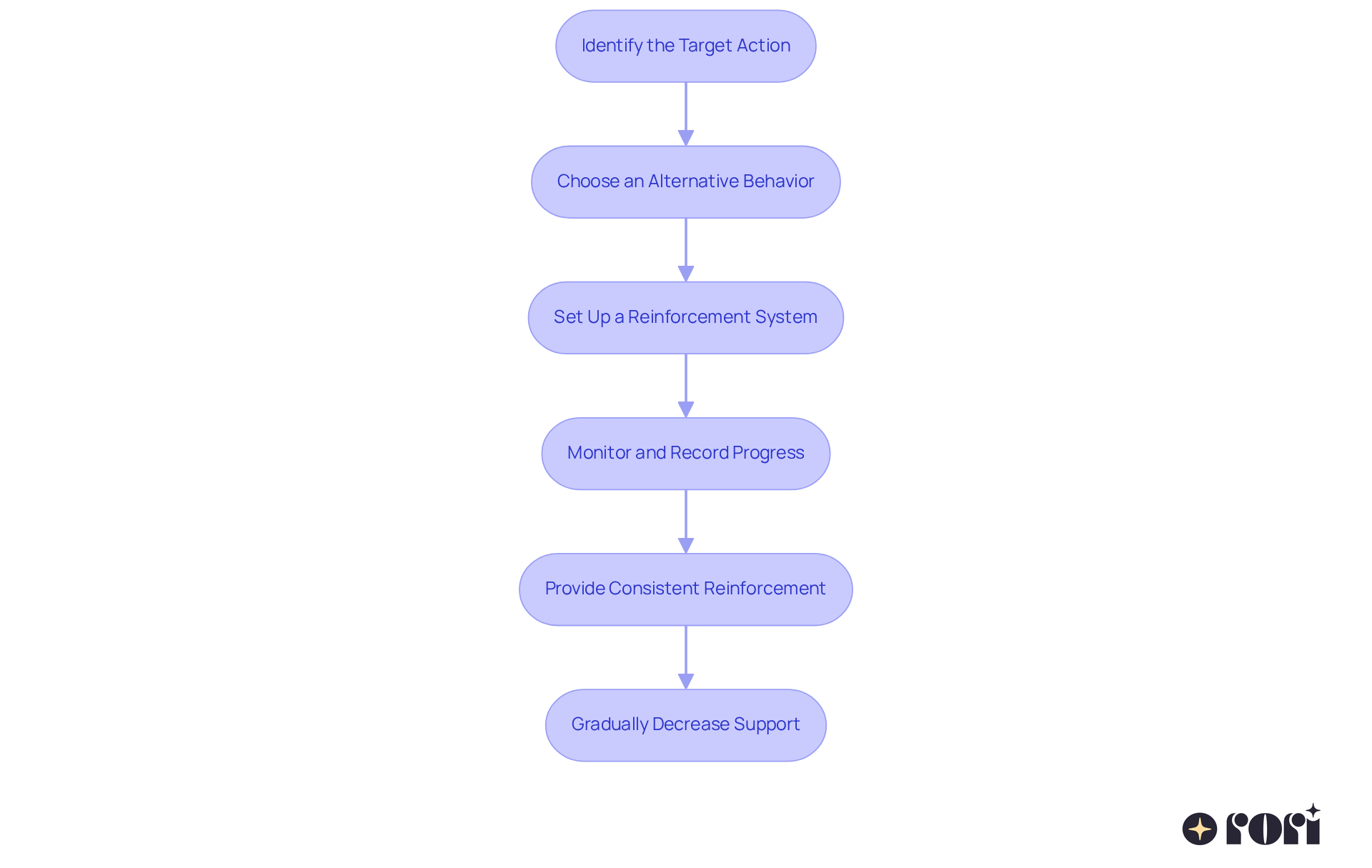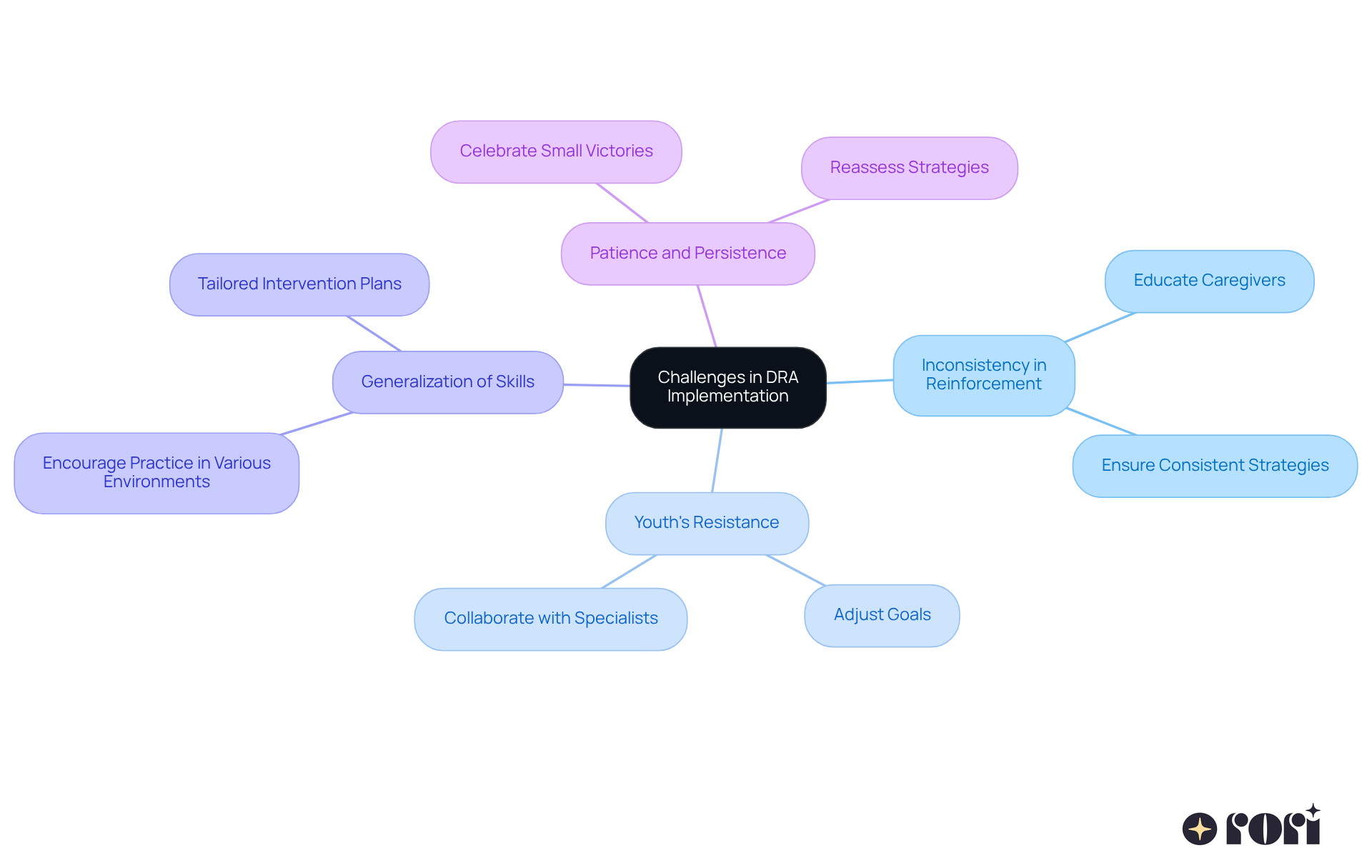This article is all about helping parents like you effectively use the Differential Reinforcement of Alternative Behavior (DRA) intervention to encourage positive behavior changes in your children. By focusing on rewarding the behaviors you want to see more of, while giving less attention to the ones you don’t, you can really boost your child’s communication skills and social interactions. Research backs this up, showing that DRA can help reduce challenging behaviors and promote independence.
Let’s face it, parenting can be tough! You might find yourself wondering how to encourage your child to express themselves better or interact more positively with others. It’s a common challenge, and you’re definitely not alone. Imagine a scenario where your child starts sharing their toys with friends instead of hoarding them. That’s the kind of positive change we’re aiming for!
The good news is that with DRA, you can make a real difference. By reinforcing those desirable behaviors, you’re not just helping your child; you’re also creating a more harmonious environment at home. It’s all about building those skills that lead to better interactions and a happier child.
So, why not take the first step? Explore the resources available to you, and remember, we’re here to help you every step of the way! Let’s work together to create a brighter future for your child.
Navigating the ups and downs of children's behavior can feel like a daunting task for many parents. 😅 The Differential Reinforcement of Alternative Behavior (DRA) intervention is here to help! It focuses on reinforcing positive behaviors while giving less attention to those pesky undesired actions. This approach not only helps kids improve their communication and social skills but also empowers them to express their needs in a more constructive way.
But let’s be real—implementing DRA isn’t always a walk in the park. Many caregivers find themselves asking:
Don’t worry, you’re not alone in this journey! Let’s explore this together and find some helpful strategies that can make a difference.
The DRA intervention, or Differential Reinforcement of Alternative Behavior, is a fantastic strategy that can really make a difference for kids! It focuses on reinforcing a positive behavior while holding back on rewards for the undesired ones. Imagine a child who usually screams for attention; instead, a parent can encourage them to use their words to express their needs. By shining a light on these positive actions, the DRA intervention helps kids develop better communication skills and social interactions, paving the way for greater independence.
Research backs up the effectiveness of the DRA intervention, demonstrating that it can reduce challenging behaviors like outbursts and inappropriate noises while boosting positive actions, such as asking for a break. It’s been shown to benefit both kids with developmental disabilities and those who are typically developing, making it a versatile tool for behavior modification.
Success stories really highlight DRA's impact! For instance, a teacher praised a student every time they raised their hand instead of shouting out answers. This consistent reinforcement not only cut down on disruptive behavior but also got the student more engaged in class. Another case study revealed that rewarding a young learner for each small step toward a new skill, like tying their shoes, significantly boosted their self-esteem and motivation.
As Johanna Staubitz, an associate professor, notes, 'The DRA intervention has been shown to be effective for youngsters with developmental disabilities and typically developing individuals.' This really emphasizes how relevant the DRA intervention is in various settings, solidifying its role in Applied Behavior Analysis (ABA) for fostering positive behavioral changes in youth.
However, to implement the DRA intervention effectively, it’s crucial to carefully consider the quality of reinforcement and the choice of alternative behaviors. Educating caregivers is key here; informed parents can tailor DRA strategies to meet their child’s unique needs. By understanding and applying the DRA intervention, parents can empower their children to develop essential skills and enhance their overall quality of life. This empowerment is further supported through personalized assistance, clear progress tracking, and adaptable strategies, ensuring caregivers are ready to provide the right support at home, complementing professional interventions and promoting consistency.
Let’s explore this together! We’re here to help you every step of the way!

Differential Reinforcement of Alternative actions (DRA) intervention is such a game-changer when it comes to helping our kids! 🌟 Instead of just focusing on what they shouldn’t do, the DRA intervention shines a light on the positive behaviors we want to see. This approach creates a warm and supportive environment where young people feel encouraged to engage in the right actions. Research shows that kids with Autism Spectrum Disorder (ASD) often respond better to positive reinforcement, making their learning experiences so much richer.
When we implement DRA intervention, we’re not just reducing challenging behaviors; we’re also providing clear alternatives. Imagine a young student who learns to raise their hand instead of interrupting during class. When they get praise or tokens for this, it reinforces that great behavior! It’s all about helping them understand what’s expected and celebrating those wins.
Plus, the DRA intervention helps kids express their needs in ways that are socially acceptable. This boosts their communication skills and fosters independence. By focusing on the positives, we empower our children to build essential skills that will serve them well in the long run. Let’s explore this together and see how we can support our kids every step of the way!

Implementing the DRA intervention can feel like a challenge, but it’s completely achievable! Let’s break it down into some simple steps that can make a real difference for you and your child.
Identify the Target Action: Start by pinpointing the specific behavior you want to change. For instance, if your little one tends to throw toys when upset, that’s your focus.
Choose an Alternative Behavior: Next, think about a more positive behavior to encourage. Teaching your child to express their feelings with words can be a fantastic alternative.
Set Up a Reinforcement System: Decide how you’ll reinforce this new behavior. Whether it’s verbal praise, tokens, or small rewards, make sure to celebrate those moments when your child uses the alternative behavior.
Monitor and Record Progress: Keep track of how often both the target and alternative behaviors occur. This will help you see what’s working and where you might need to adjust.
Provide Consistent Reinforcement: When your child uses the alternative behavior, reinforce it right away! Consistency is key to helping them learn and embrace this new way of acting.
Gradually Decrease Support: As your child gets the hang of the alternative behavior, slowly reduce how often you reinforce it. This helps them become more independent and self-sufficient.
Research shows that the DRA intervention can lead to impressive improvements in behavior, with studies indicating an average reduction of problematic actions by 69%! For example, one teacher successfully cut down on shouting by encouraging a student to raise their hand instead. By following these steps, you can foster positive behavior changes and boost your child’s communication skills, paving the way for better social interactions and emotional expression.
Let’s explore this together! Remember, you’re not alone in this journey, and we’re here to help you every step of the way!

Implementing the DRA intervention can come with its own set of challenges. Let’s take a look at some common issues and how we can tackle them together:
Inconsistency in Reinforcement: It’s super important for all caregivers to be on the same page when it comes to reinforcement strategies. Consistency across different settings—like home and school—plays a huge role in achieving positive outcomes. Research shows that sticking to structured support practices can really boost behavioral results. By educating caregivers, we can ensure everyone knows how to implement consistent strategies that work hand-in-hand with professional interventions.
Youth's Resistance: If your child is pushing back against the alternative behavior, it might be time to reassess the reinforcement system. Are the rewards motivating enough? Maybe we need to tweak the alternative actions to make them more appealing and achievable. For instance, if a child isn’t keen on a specific action, caregivers can collaborate with specialists to adjust the goals based on what truly interests the child. Case studies reveal that when kids engage with attainable goals, their willingness to participate tends to soar. Caregivers making informed decisions grounded in ABA principles can lead to more effective adjustments.
Generalization of Skills: Sometimes, kids can use the alternative behavior in one place but struggle in another. To help with this, encourage practice in various environments and situations, including community activities. This approach reinforces the behavior across different contexts, making it more effective. Caregivers who understand the importance of generalization can better support their children in applying skills everywhere, often teaming up with analysts to ensure tailored intervention plans are successfully executed.
Patience and Persistence: Remember, behavior change takes time. Celebrate those small victories along the way and keep a patient mindset. If it feels like progress has stalled, take a moment to reassess your strategies and make any necessary tweaks. Statistics show that caregivers who consistently implement intervention strategies see better outcomes, highlighting the importance of sticking with it. The knowledge and skills gained through caregiver education can really help reduce stress and improve family dynamics, creating a supportive environment for behavior change.
By facing these challenges with a proactive attitude and tapping into the benefits of caregiver education, parents can enhance the effectiveness of the DRA intervention, leading to positive behavioral changes in their children. Let’s explore this together!

Differential Reinforcement of Alternative Behavior (DRA) is such a game-changer for helping kids develop positive behaviors! 🌟 By focusing on rewarding the good stuff while dialing back on the not-so-great behaviors, DRA not only helps change behavior but also boosts communication skills and encourages independence. It’s all about empowering kids to express their needs clearly, creating a warm environment that nurtures their growth and development.
What’s really exciting is how versatile and effective DRA can be! It works wonders for kids with developmental disabilities and those who are typically developing. The article shares a step-by-step guide packed with practical strategies for parents to implement DRA. Consistency, quality reinforcement, and adaptability are key here! Plus, the success stories and research show significant drops in challenging behaviors, along with a boost in kids’ self-esteem and engagement.
Embracing the DRA approach can truly change how children interact with their world and their peers. By giving parents the tools and knowledge to implement DRA effectively, we’re paving the way for a brighter future for our kids—one where they can thrive socially, emotionally, and behaviorally. Remember, it’s all about patience and persistence. Celebrate those small victories along the way as you navigate this journey toward meaningful behavior change. Let’s explore this together! 💪
What is Differential Reinforcement of Alternative Behavior (DRA)?
DRA is an intervention strategy that focuses on reinforcing positive behaviors while withholding rewards for undesired behaviors. It encourages children to express their needs through appropriate actions instead of challenging behaviors.
How does DRA benefit children?
DRA helps children develop better communication skills and social interactions, reduces challenging behaviors like outbursts, and promotes positive actions, such as asking for a break. It is effective for both children with developmental disabilities and typically developing children.
Can you provide examples of DRA in action?
One example is a teacher who praises a student for raising their hand instead of shouting answers, which reduces disruptive behavior and increases engagement. Another example involves rewarding a young learner for each step taken towards a new skill, like tying their shoes, which boosts their self-esteem and motivation.
What does research say about the effectiveness of DRA?
Research supports the effectiveness of DRA in reducing challenging behaviors and enhancing positive behaviors, making it a versatile tool for behavior modification in various settings.
What considerations are important for implementing DRA effectively?
It's crucial to consider the quality of reinforcement and the choice of alternative behaviors. Educating caregivers about DRA strategies is essential to tailor the approach to meet each child's unique needs.
How can parents support their children using DRA?
Parents can empower their children by understanding and applying DRA strategies, providing personalized assistance, tracking progress, and adapting strategies to ensure consistency at home and complement professional interventions.